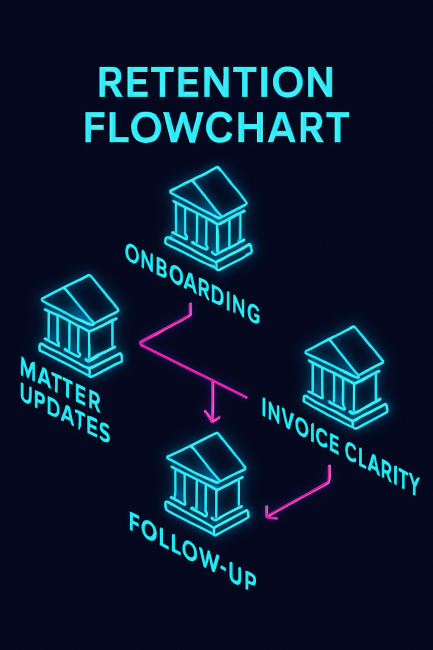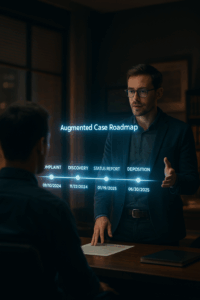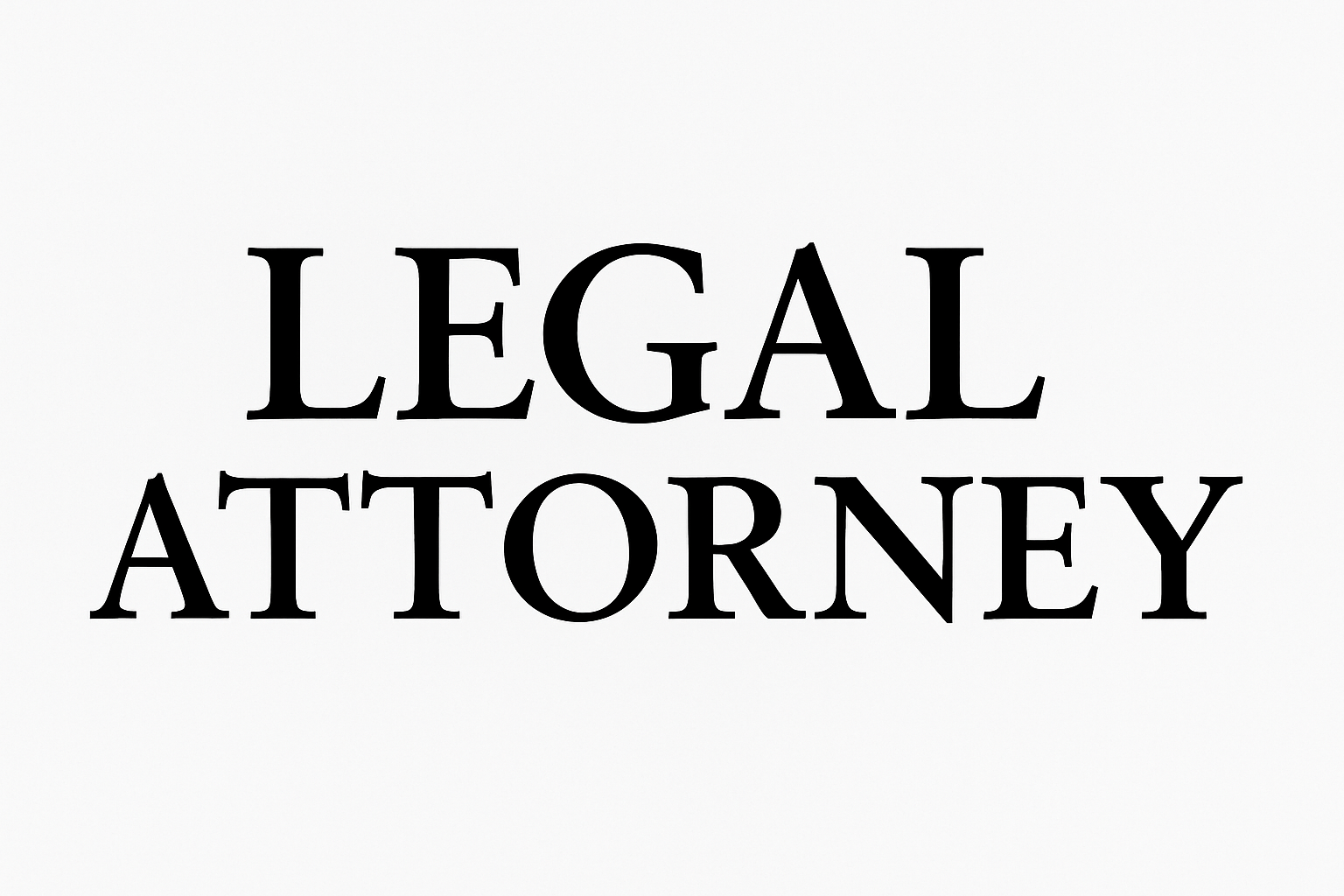No Surprises: How Radical Transparency Became the New Retention Engine for Law Firms

No Surprises: How Radical Transparency Became the New Retention Engine for Law Firms
Why “setting clear expectations” now matters more than rainmaking—and how to master it before your clients bolt.
The $50,000 Sticker‑Shock
On a Friday afternoon in late June, the general counsel of a mid‑size logistics company opened an invoice from “her” outside firm. The bill—$147,892—was $50,000 over budget and arrived with no prior warning. By Monday morning the matter (and the firm) were gone, replaced by a competitor that promised granular budgets, mid‑matter check‑ins, and plain‑English updates.
Scenarios like this have become so common that many legal‑tech vendors now market themselves as “anti‑surprise” platforms. Behind the marketing spin lies a hard truth: clients have lost patience with opacity. If law firms can’t articulate scope, timelines, and costs in advance—and keep clients posted when those variables shift—clients will walk.
Why Expectations Drive Retention
| Key Expectation Gap | Typical Consequence | Retention Risk |
|---|---|---|
| Undisclosed scope creep | Shock invoice at close | Very High |
| “Black‑box” timelines | Anxiety + repeated status calls | High |
| Hourly rates with no budget | Perception of runaway costs | High |
| One‑way communication channels | Feeling ignored | Medium |
| Promises on outcomes vs. process | Accusations of “guarantees” | Medium |
Table 1 – Expectation gaps that most often trigger client churn
-
Cost clarity is king. 82 % of firms report “rising client demands for financial transparency,” and 46 % now provide itemized budgets at matter launch.[1]
-
Mismatch = churn. In a 2025 survey, only one‑third of in‑house teams said outside counsel deliver predictable costs—a leading reason they switch firms mid‑matter.[2]
-
Communication failures kill loyalty. 82 % of clients have actually fired a firm over poor communication.[3]
“Responsiveness is more than a service standard; it’s a reflection of how much a firm values its clients.”
—Jay Sarmaz, VP of Data & AI, Case Status [1]
The Transparency Playbook
1 Scope Before Strategy
-
Write a plain‑language Statement of Work that lists:
-
what you will do,
-
what you won’t do,
-
major assumptions, and
-
an escalation path if facts change.
-
-
Use “if‑then” budgets (e.g., “If the case settles pre‑trial, fees cap at $X; if it proceeds to discovery, revised budget Y applies”).
2 Budget Dashboards & Live Data
Modern clients expect real‑time visibility. Client portals with live burn‑rate widgets are becoming table stakes. Firms using budgeting dashboards report 27 % less scope‑related write‑off and cut “Where are we?” calls by half.[1]
STAT SNAPSHOT
Metric Firms Meeting It Client Satisfaction Impact Response time ≤ 24 h 35 % +19 NPS points Mid‑matter budget updates 2 % +23 NPS points Mobile self‑service app 9 % +26 NPS points Source: Case Status 2025 CX Report [1]
3 Mid‑Matter “Change Orders”
When circumstances shift, pause and re‑scope—exactly as architects do with construction change orders. Document the adjustment, obtain written sign‑off, and update the budget dashboard. Clients rarely object to a higher bill if they saw it coming.
4 Fee Structures That Match Risk
Alternative Fee Arrangements (AFAs) aren’t just trendy; they align expectations at launch. Fixed‑fee phases, collars, or success bonuses eliminate “meter‑running” anxiety. AI pricing tools now mine historical time data to suggest realistic flat fees.[2]
 Visual Case Brief
Visual Case Brief
Acme Biotech v. Delta IP (D. Mass. 2022)
Issue: Client alleged malpractice when counsel missed a PCT filing window.<br>
Key Fact: Attorney failed to confirm timeline in writing after a verbal conversation.<br>
Outcome: $2.3 M settlement and bar complaint. Court highlighted “absence of written scope and deadline confirmation” as negligent.[4]
Lesson: Even minor communication lapses can produce catastrophic outcomes—and destroy retention.
Five Pitfalls to Avoid
-
Over‑promising results (“We’ll win summary judgment”) instead of processes and effort.
-
Silent scope creep—adding junior associates without notice.
-
Billing by surprise—sending invoices only at the end of a phase.
-
Data hoarding—partners can’t share status or budget data they don’t track.
-
Ignoring feedback loops—72 % of attorneys believe they’re “caring”; only 40 % of clients agree.[1]
Tomorrow’s Transparency: Predictive, Proactive, Personal
Clients will soon expect predictive dashboards—AI systems that forecast likely cost overruns weeks ahead, triggering alerts and revised budgets automatically. In parallel, self‑service micro‑apps (think “Domino’s pizza tracker” for lawsuits) will give individuals step‑by‑step visibility. Firms that treat these tools as value enablers rather than overhead will convert transparency into a durable retention moat.
The Bottom Line
Every unspoken assumption is a future conversation—usually an awkward one. Radical clarity on scope, timeline, and fees turns those assumptions into shared knowledge. In an era where 68 % of clients leave because they feel their firm “doesn’t care,” simply showing them the roadmap—and sticking to it—may be your most potent retention strategy.[5]
Endnotes
-
Case Status, Legal Client Experience Report (June 17 2025). PR Newswire
-
Sharon Scenna, “Can AI End Client Frustrations Over Billing?” Reuters Legal (Jan. 25 2024). Reuters
-
Case Status Blog, “What Do Lawyers Spend Their Time Doing?” (Mar. 2024). casestatus.com
-
Massachusetts Bar Association, “IP Malpractice Mitigation” (Jan./Feb. 2022). Massachusetts Bar Association
-
Grow Law, “Legal Marketing Statistics for Law Firms in 2025” (Mar. 20 2025). Grow Law
-
BigHand, Industry Report: Pricing & Matter Budgeting (Apr. 2025). bighand.com
-
American Bar Association, “Exceeding Modern Client Expectations” (Dec. 16 2024). americanbar.org

